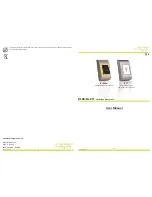
8
Section 1: Assembly & Set-up
PS25120 Primary Seeder 313-156M
4/03/14
Section 1: Assembly & Set-up
Dealer Preparations
Read and understand the Operator’s Manual. An
understanding of how this machine works will aid in the
assembly and setup.
Go through the “Pre-Assembly Checklist” before
assembling the Primary Seeder. Speed up the assembly
task and make the job safer by having all needed parts
and equipment readily at hand.
Pre-Assembly Checklist
Check
Reference
Make sure assembly tools are on hand: Hammer, tape measure,
assortment of wrenches & sockets, drill, drill bits, and spirit level.
Have a forklift or hoist with properly sized chains and safety stands on
hand capable of lifting the equipment.
Have a minimum of two people available during assembly.
Check tractor manual to see if auxiliary tractor
weights/ballast are needed for 3-Point hook-up. See
Specifications for weight of Primary Seeder.
Specifications
Page 31
Have a tractor with remote hydraulics ready to attach
to the tongue. The tongue must be anchored to a
tractor large enough to overcome negative tongue
weight.
CAUTION! Be familiar with the term NEGATIVE
TONGUE WEIGHT. Be aware of the special
precautions you should take when working with an
implement that can develop Negative Tongue
Weight.
Make sure all major components and loose parts
are shipped with the machine.
Operator’s
Manual
Double check to make sure all fasteners & pins are
installed in the correct location. Refer to the Parts
Manual if unsure.
NOTE: All assembled hardware from the factory has
been installed in the correct location. Remember
location of a part or fastener if removed. Keep parts
separated.
Operator’s
Manual
313-156M
Parts Manual 313-
156P
Make sure working parts move freely, bolts are tight
& cotter pins are spread.
Operator’s
Manual
Make sure all grease fittings are in place and
lubricated.
Section 5
Page 28
Make sure all drive chains are properly tension and
aligned.
Operator’s
Manual
Make sure all safety labels are correctly located and
legible. Replace if damaged.
Make sure all red and amber reflectors are correctly
located and visible when in transport position.
Important Safety
Information
Make sure “Slow Moving Vehicle” emblem is in
place and visible when in transport position.
Make sure all tires are properly inflated and wheel
bolts are tightened to the specified torque.
Section 8
Page 35
Tractor Requirements
Your PS25120 is designed for tractors in the Category 2
class. Horsepower rating of the tractor should not be less
than 40 HP for a pull-type unit and not less than 50 HP for
3-Point, front wheel, or end wheel units.
Check tractor’s 3-Point lifting capacity. Make certain that
the tractor’s 3-Point lifting capacity and front end weight
is adequate for lifting and controlling the seeder under all
operating conditions. Refer to “Specifications &
Capacities” on page 31 for seeder weight.
Torque Requirements
Refer to “Torque Values Chart” on page 35 to
determine correct torque values when tightening
hardware.
Sling Brackets
Refer to Figure 1-1:
The sling brackets (#1) allow points at each end of the
seeder to hook a chain for lifting of the unit. When
hooking a chain to the sling brackets, be certain to use a
spreader bar on the chain or a long chain to prevent
bending the sling brackets.
After uncrating the unit, check to see if there are two sling
brackets (#1) installed on each end. If not, install them
now.
1.
Attach two sling brackets (#1) on each end of the
seed box with 5/8"-11 x 1 1/4" GR5 cap screws (#2),
flat washers (#3), and hex nuts (#4).
2.
Tighten nuts to the correct torque.
Sling Bracket Installation
Figure 1-1
NOTE: In order to maintain steering control, ballast
may need to be added to your tractor. Refer to your
tractor’s operator manual to determine if additional
ballast is needed.
15226











































